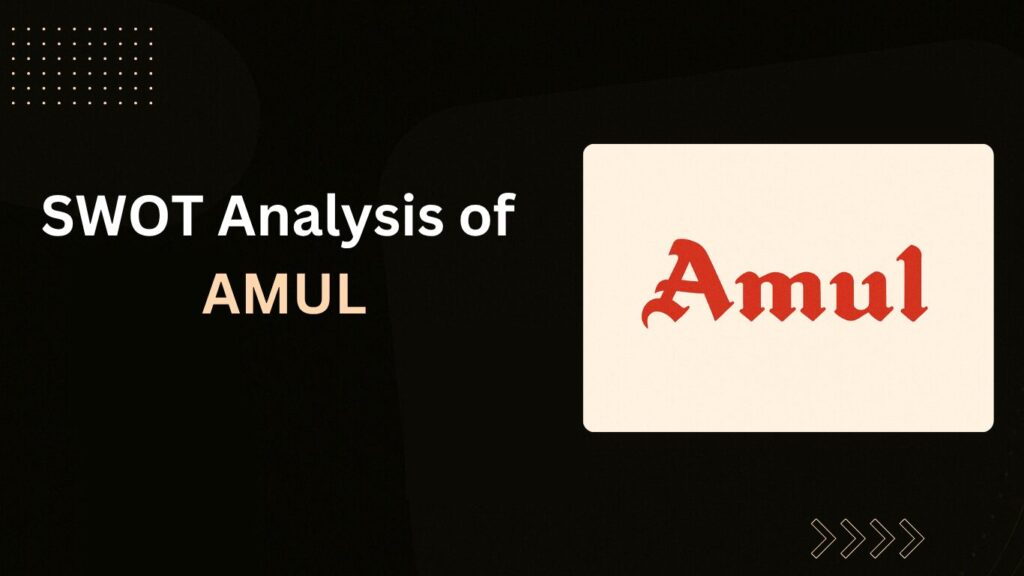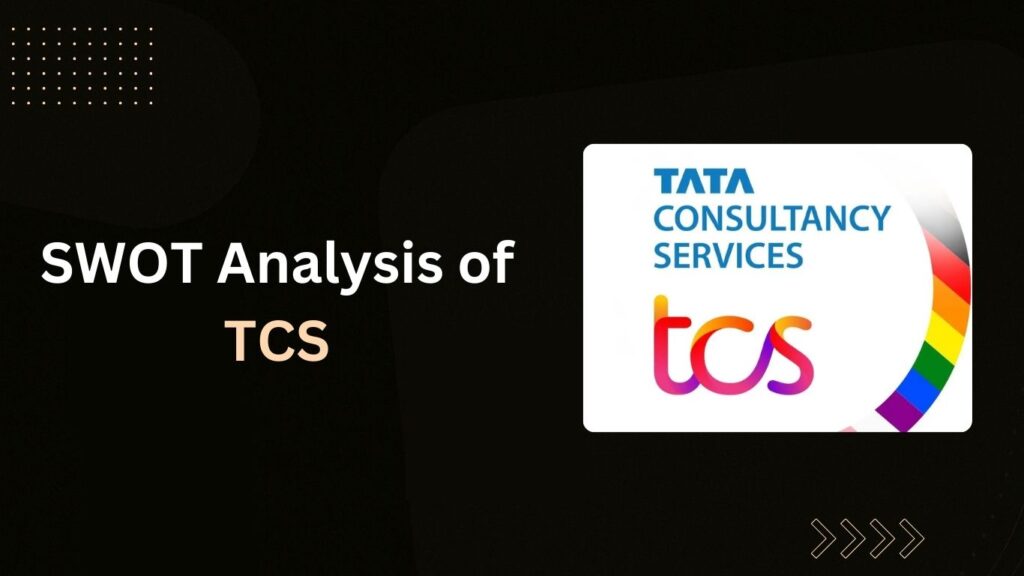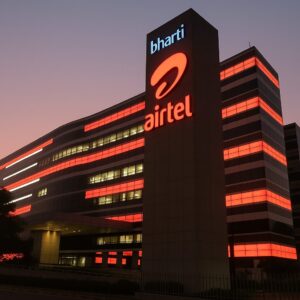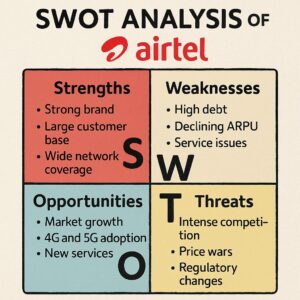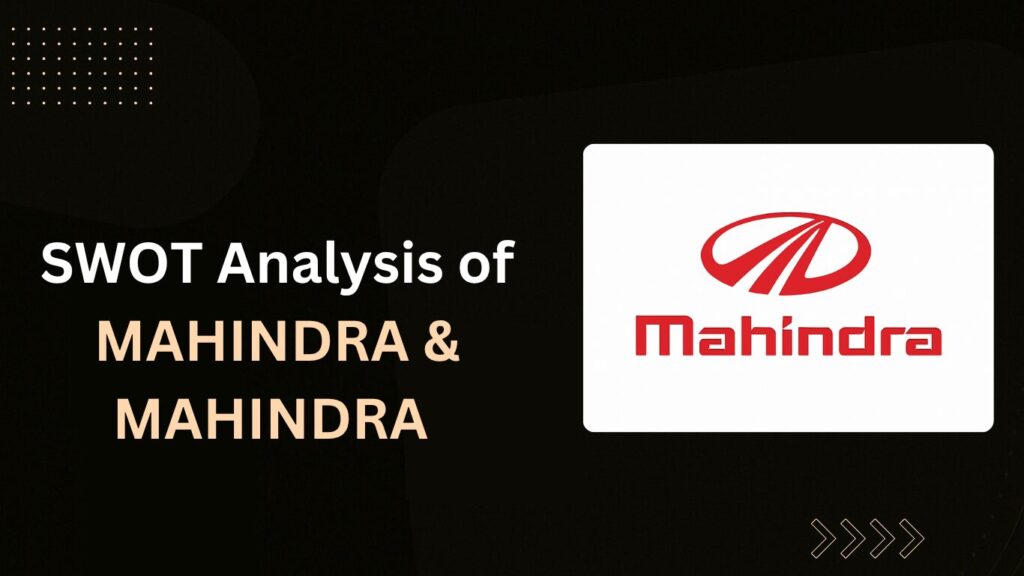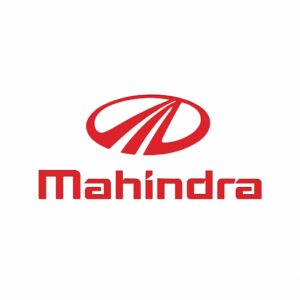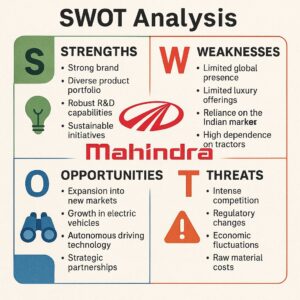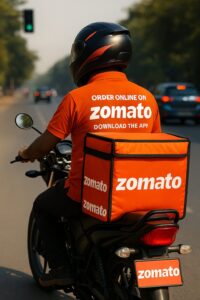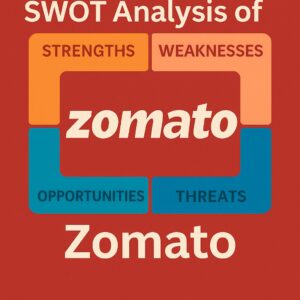Comprehensive SWOT Analysis of Amul
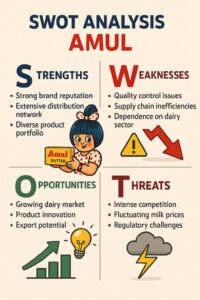
Amul, an iconic Indian dairy brand, is not just a household name but a symbol of India’s White Revolution. With its origins dating back to 1946 in the town of Anand, Gujarat, Amul has transformed the Indian dairy industry by empowering millions of farmers and creating a sustainable supply chain that delivers quality dairy products to consumers across the country. It has successfully combined tradition with innovation, staying relevant to every generation of Indian consumers.
The significance of Amul in the Indian dairy industry is monumental. As the largest dairy cooperative in India, Amul sources milk from over 3.6 million farmers, offering them fair prices while ensuring consumers get affordable, high-quality dairy products. It is not just a company—it is a movement that redefined dairy farming and consumer trust in India.
Conducting a SWOT analysis of Amul is crucial to understanding the dynamics of its business model, its market positioning, the challenges it faces, and the potential areas of growth. This comprehensive study helps identify strategic areas for improvement while reinforcing what makes Amul an industry leader.
Amul at a Glance
Brand Name: Amul
Established: 1946
Headquarters: Anand, Gujarat, India
Industry: Dairy & Food Processing
Parent Organization: Gujarat Cooperative Milk Marketing Federation (GCMMF)
Founders: Tribhuvandas Patel, Verghese Kurien
Milk Procurement: 3.6 million milk producers
Distribution Network: Over 10,000 distributors and 1 million retailers
Export Market: Over 40 countries including USA, UAE, Singapore, and Australia
Product Range: Milk, Butter, Cheese, Ice Cream, Chocolates, Paneer, Yogurt, Beverages
Advertising Icon: Amul Girl – Known for witty, topical ads
Strengths of Amul
Strong Brand Recognition
Amul has become synonymous with dairy in India. Its legacy, built over seven decades, is backed by consistent quality, affordability, and impactful advertising. The Amul Girl, an iconic mascot since 1966, has been a constant voice in India’s pop culture, making witty remarks on current events.
Example: During the COVID-19 lockdown, the Amul Girl was featured with a mask and the slogan “Maska Nahi, Mask Pehno”, urging people to stay safe. This simple campaign not only promoted health awareness but strengthened Amul’s emotional connect with its audience.
Large Product Portfolio
Amul’s range covers everything from milk, butter, cheese, paneer, shrikhand, ice creams, and chocolates to newer segments like camel milk and lactose-free milk. It caters to various dietary needs and budgets, ensuring there’s something for every Indian.
Example: Amul Camel Milk, introduced for its health benefits, positioned the brand as an early mover in niche dairy segments.
Wide Distribution Network
Amul boasts a supply network of over 10,000 distributors and 1 million+ retailers, ensuring daily delivery even to India’s remotest areas. Their well-managed cold chain logistics allow even sensitive products like milk and ice cream to retain freshness during transport.
Economies of Scale
Being India’s largest dairy cooperative, Amul benefits from economies of scale. Its massive production capabilities bring down costs per unit, allowing it to maintain quality while keeping prices affordable for consumers.
Efficient Supply Chain
Amul collects milk from over 3.6 million farmers across 18,700 villages daily. This highly organized procurement process ensures freshness, minimal wastage, and consistent farmer support.
Farmer-Centric Cooperative Model
Amul’s core strength lies in its cooperative model. It is owned by farmers, run for their benefit, and managed by professionals. This ensures fair prices for producers and transparency throughout the supply chain.
Example: Farmers in Gujarat have seen consistent growth in income thanks to Amul’s direct procurement, skipping exploitative middlemen.
Strong R&D and Innovation
Amul has been at the forefront of dairy innovation. Whether it’s probiotic curd, flavored milk, or camel milk, the brand constantly brings new offerings aligned with evolving consumer demands.
Example: Amul Lactose-Free Milk, targeted at lactose-intolerant consumers, gained instant popularity among urban health-conscious buyers.
Emotional Connect with Consumers
Generations of Indians have grown up with Amul. From school tiffins to tea-time snacks, Amul products hold a nostalgic place in people’s lives. This emotional bond drives loyalty beyond price or competition.
Export Potential
Amul exports its products to over 40 countries, including the USA, UAE, Singapore, and Australia. This highlights not just product demand but Amul’s capability to meet international quality and regulatory standards.
Affordable Pricing
Amul maintains competitive pricing despite offering premium quality. This value-for-money strategy has helped it penetrate markets across urban, semi-urban, and rural areas, appealing to all income groups.
Weaknesses of Amul
Dependency on Indian Market
Amul relies heavily on domestic revenue. Its limited exposure to premium international markets makes it vulnerable to local economic and demand fluctuations.
Limited Product Customization
Unlike global brands such as Nestlé, Amul offers fewer product variants tailored to specific regional or dietary preferences in international markets.
Inconsistent Quality in Rural Areas
Due to decentralized procurement and regional packaging units, the taste and freshness of certain products may vary across regions, especially in far-flung rural locations.
Over-Diversification Risk
Venturing into non-core categories like cookies, fruit juices, and edible oils can stretch the brand’s focus. This move may dilute its image as a dairy expert.
Example: Amul’s Tru fruit juices, though innovative, haven’t matched the success of its dairy products.
Limited Premium Branding
Amul excels at affordability but lags in offering luxury or gourmet products like artisanal cheeses or specialty butters, where brands like President or Mooz are gaining traction.
Supply Chain Bottlenecks in Remote Areas
Despite a robust logistics system, terrain and weather can disrupt deliveries in certain regions.
Example: In North-Eastern states, especially during the monsoon, product delays and stockouts are common due to poor road connectivity.
Opportunities for Amul
Rising Demand for Organic & Healthy Products
With the rise in health awareness, there’s growing demand for organic, low-fat, and probiotic dairy. Amul can tap this trend by expanding its health-focused offerings.
Urban Health Consciousness
Urban consumers are actively looking for protein-rich, calcium-fortified, and immunity-boosting food products. This opens the door for innovation in dairy-based beverages and nutritional snacks.
Expansion into Tier II & Tier III Cities
Smaller cities are seeing a boom in dairy consumption due to rising income and health awareness. These areas present untapped potential for Amul’s core and value-added products.
Growth in Packaged Food Sector
Busy lifestyles are driving demand for ready-to-eat and frozen meals. Amul can leverage its existing dairy range to launch convenient packaged food items.
Global Expansion
Amul’s global reach can grow, especially in regions with large Indian diaspora populations like Canada, UK, and Middle East, by offering ethnic dairy products familiar to expatriates.
Partnerships & Collaborations
Collaborating with retail giants like Walmart or fast-food chains like Subway can provide Amul greater market visibility and shared innovation opportunities.
Innovation in Dairy Alternatives
With the rise of veganism, Amul can expand into plant-based alternatives like almond, oat, and soy milk. The brand has already started exploring this space.
Strengthening E-Commerce Presence
Amul is already active on platforms like BigBasket and Amazon, but enhancing its direct-to-consumer channels and launching a dedicated mobile app could boost sales and brand engagement.
Example: During the pandemic, Amul launched home delivery services in major cities like Ahmedabad and Mumbai to maintain uninterrupted service.
Threats for Amul
Intense Competition
Amul is facing increasing competition from both domestic brands like Mother Dairy and Hatsun Agro, and global brands like Nestlé, Danone, and Britannia.
Changing Consumer Preferences
Shifts toward veganism, plant-based diets, and concerns over lactose intolerance are creating a growing customer base that prefers dairy-free options.
Milk Price Volatility
Raw milk prices fluctuate due to climate, fodder availability, and seasonal variation. This affects procurement costs and overall profitability.
Supply Chain Disruptions
Natural disasters, political unrest, and events like COVID-19 can severely impact milk collection, processing, and delivery schedules.
Government Regulations
Frequent changes in price caps, GST, FSSAI norms, and packaging guidelines affect production, marketing, and profitability.
Brand Dilution Risk
Amul’s ventures into too many product lines may blur its brand identity as a dairy leader.
Example: Introducing energy drinks or bakery products might confuse customers about Amul’s core strength in dairy.
Competitors of Amul Company
1. Mother Dairy – The North India Powerhouse
Mother Dairy is one of Amul’s closest rivals, especially in Northern India. Backed by the National Dairy Development Board (NDDB), it has a stronghold in urban markets like Delhi-NCR.
- It’s best known for fresh milk, dahi (curd), lassi, and ice cream.
- Their aggressive pricing and localized supply chain often attract daily consumers.
Example:
In Delhi NCR, Mother Dairy booths are as commonly found as kirana stores, often preferred for fresh milk due to daily availability and brand trust.
2. Britannia – The FMCG Giant in Dairy
While Britannia is largely known for its biscuits, it has made significant strides in the dairy sector with products like cheese slices, flavored milk, butter, and dairy whitener.
- Britannia focuses on premium packaging, innovation, and taste.
- It’s especially competitive in urban areas and modern retail formats.
Example:
Britannia Cheese has become a staple in many urban homes due to its smooth texture and variety, competing head-on with Amul Cheese in metro cities.
3. Nestlé – The International Challenger
Nestlé brings global experience and premium appeal into the Indian dairy space. Its products like Milkmaid (condensed milk), Nestlé a+ milk, flavored yogurts, and baby food offer international quality standards.
- Nestlé positions itself in the premium segment, targeting health-conscious and brand-sensitive consumers.
Example:
In cities like Mumbai and Bangalore, Nestlé’s a+ Milk is often chosen for its UHT technology and packaging, even though it’s priced higher than Amul.
4. Hatsun Agro – Southern India’s Dairy King
Headquartered in Tamil Nadu, Hatsun Agro dominates the South Indian dairy market under brands like Arokya, Arun Ice Creams, and Hatsun Curd.
- Its distribution is robust in rural and semi-urban South India, offering regional flavors and products.
- Known for its high-quality flavored milk, curd, and ghee.
Example:
In Tamil Nadu, Arokya Milk by Hatsun Agro is preferred over Amul due to its freshness and deep-rooted regional branding.
5. Parag Milk Foods (Gowardhan, Go Cheese)
Parag Milk Foods is rapidly gaining ground in the value-added dairy product segment.
- It is especially known for its Gowardhan Ghee, Go Cheese, and Paneer.
- The brand focuses on rural penetration and digital marketing to connect with millennials.
Example:
Go Cheese, endorsed by celebrities like Sonu Sood, has become a hit among young consumers, competing closely with Amul’s cheese cubes and spreads.
- Rise of Plant-Based Milk Brands – A Modern Threat
The shift in consumer behavior toward plant-based diets has opened doors for new players like:
- So Good – Almond and soy milk products
- Alpro – European plant-based brand with high-end appeal
- Epigamia – Greek yogurt, almond milk, and vegan dairy alternatives
These brands target urban, health-conscious, and lactose-intolerant consumers, offering dairy-free substitutes.
Example:
In tier-1 cities like Bangalore, vegan cafes and fitness-conscious consumers prefer Epigamia Almond Milk over regular dairy, especially during health detox challenges.
Conclusion
Amul is a shining example of a successful cooperative model that integrates farmers, technology, and business acumen. Its strengths lie in its vast distribution network, affordable pricing, diverse product range, and farmer empowerment. However, challenges like competition, over-diversification, and changing consumer preferences need to be strategically managed.
To maintain its leadership:
- Amul should focus on premiumization of products.
- Expand global and online presence.
- Innovate in dairy alternatives.
- Enhance quality consistency.
- Leverage health and nutrition trends.
The future lies in innovation, strategic expansion, and staying true to its core identity while adapting to market changes.
FAQs
- What is the full form of Amul? Amul stands for Anand Milk Union Limited.
- Who is the founder of Amul? Dr. Verghese Kurien is considered the architect behind Amul and the White Revolution.
- What are the main products of Amul? Milk, butter, cheese, paneer, curd, ice cream, chocolates, and ghee are some of the main products.
- What makes Amul different from other dairy brands? Its cooperative model and direct farmer engagement make it unique.
- Is Amul present internationally? Yes, Amul exports to over 40 countries including the USA, UAE, and Australia.
- What are the disadvantages of Amul milk? Some rural areas report inconsistent quality due to local packaging and distribution issues.
- What is Amul’s biggest strength? Its extensive supply chain and emotional brand connection with Indian consumers.
- What are the key competitors of Amul? Nestlé, Mother Dairy, Britannia, Hatsun Agro, and Parag Milk Foods.
- Is Amul investing in dairy alternatives? Yes, Amul has started launching products like lactose-free milk and almond milk.
- How has Amul impacted Indian farmers? By eliminating middlemen, Amul ensures better returns for over 3.6 million farmers.

